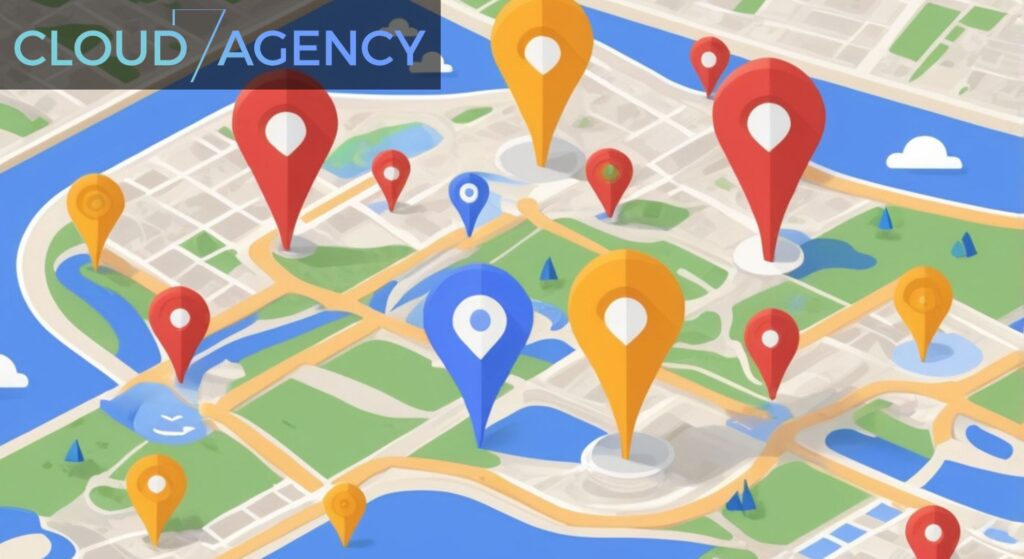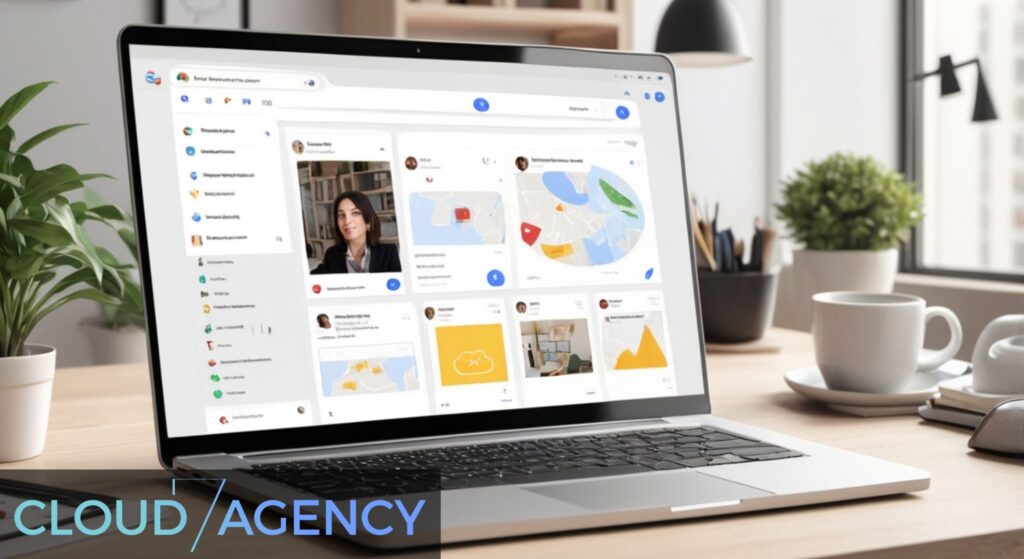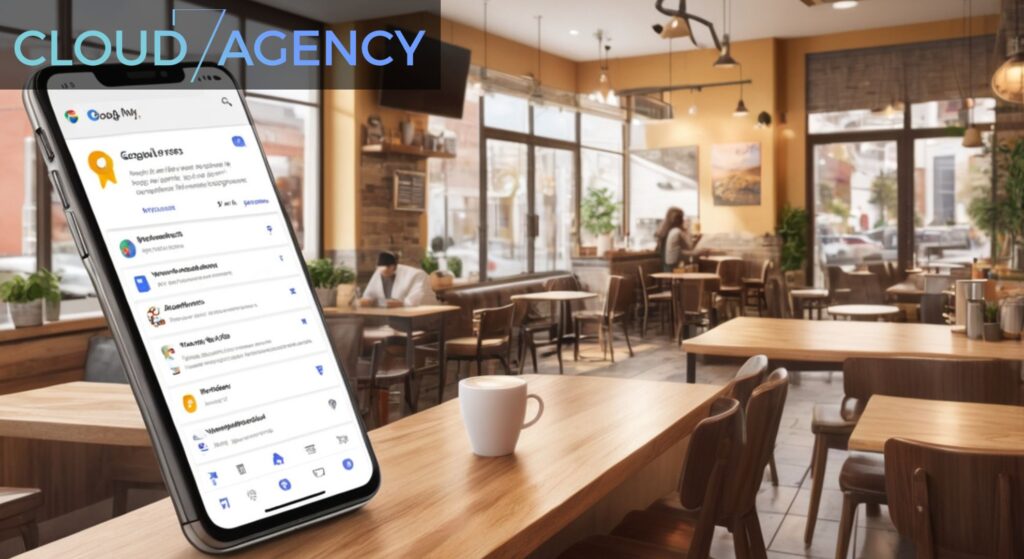In today’s hyper-competitive digital landscape, local businesses face an unprecedented challenge in capturing the attention of nearby customers. With over 5 billion searches conducted on Google daily, and a significant portion of these being location-based queries, the importance of maps optimization cannot be overstated. Local visibility has become the cornerstone of business success, particularly for companies serving specific geographic areas.
Google Maps has evolved far beyond a simple navigation tool—it’s now a powerful discovery platform where consumers actively search for products, services, and businesses in their immediate vicinity. When potential customers search for “restaurants near me,” “plumbers in [city],” or “best coffee shops nearby,” Google Maps serves as the primary gateway connecting businesses with their target audience. This transformation has made Google My Business optimization an essential component of any comprehensive digital marketing strategy.
The statistics surrounding local search behavior are compelling and impossible to ignore. Research indicates that 76% of people who search for something nearby on their smartphone visit a related business within a day, and 28% of those searches result in a purchase. Furthermore, 46% of all Google searches are seeking local information, highlighting the massive opportunity that exists for businesses that prioritize maps optimization.
However, simply having a Google My Business listing is no longer sufficient. The digital marketplace has become increasingly sophisticated, with consumers expecting accurate, comprehensive, and engaging business information at their fingertips. They want to see high-quality photos, read authentic reviews, access current operating hours, and understand exactly what makes one business different from its competitors. This evolution in consumer expectations has created a complex ecosystem where success depends on strategic optimization across multiple touchpoints.
The competitive advantage gained through effective maps optimization extends beyond mere visibility. Businesses that invest in comprehensive Google My Business optimization often experience improved customer trust, higher conversion rates, and enhanced brand credibility. When a business appears prominently in local search results with complete information, positive reviews, and professional imagery, it immediately establishes authority and reliability in the minds of potential customers.
Key Takeaways
Local Search Dominance: Google Maps has become the primary platform for local business discovery, with nearly half of all Google searches having local intent. Businesses that optimize their presence effectively can capture a significant share of this valuable traffic.
Complete Profile Optimization: A fully optimized Google My Business profile includes accurate NAP (Name, Address, Phone) information, comprehensive business descriptions, relevant categories, operating hours, and high-quality visual content that showcases the business effectively.
Review Management Strategy: Customer reviews directly impact local search rankings and consumer decision-making. Implementing a systematic approach to encouraging positive reviews and professionally responding to all feedback creates a competitive advantage.
Visual Content Impact: High-quality photos and videos significantly influence customer engagement and conversion rates. Businesses with professional visual content typically receive 42% more requests for directions and 35% more click-throughs to their websites.
Consistency Across Platforms: Maintaining consistent business information across all online directories, social media platforms, and citation sources strengthens local SEO signals and improves overall maps optimization performance.
Mobile-First Approach: With the majority of local searches occurring on mobile devices, optimizing for mobile user experience, including fast-loading pages and mobile-friendly contact methods, is crucial for conversion success.
Analytics and Monitoring: Regular monitoring of Google My Business insights, search performance, and competitor activities enables data-driven optimization decisions that continuously improve local visibility and engagement.
Understanding Google Maps Optimization Fundamentals
Maps optimization represents a multifaceted approach to enhancing business visibility within Google’s local search ecosystem. At its core, this process involves strategically optimizing various elements of a business’s online presence to improve rankings in local search results, increase customer engagement, and drive meaningful conversions. The foundation of successful maps optimization lies in understanding how Google’s algorithm evaluates and ranks local businesses.

According to Google’s local ranking guidelines, Google’s local search algorithm considers three primary factors when determining business rankings: relevance, distance, and prominence. Relevance measures how well a business listing matches the user’s search query, making keyword optimization and accurate categorization essential. Distance calculates the proximity between the searcher’s location and the business, emphasizing the importance of accurate address information. Prominence evaluates the overall authority and credibility of a business based on factors such as reviews, citations, and online reputation.
The Google My Business platform serves as the central hub for managing local search presence. This free tool allows businesses to control how they appear across Google Search and Maps, providing opportunities to showcase unique value propositions, share updates, and engage directly with customers. Understanding the intricacies of this platform and leveraging its full potential can dramatically impact local search performance.
Modern maps optimization extends beyond basic listing management to encompass comprehensive digital presence coordination. This includes ensuring consistency across all online touchpoints, from social media profiles to industry-specific directories. The interconnected nature of digital platforms means that inconsistencies in business information can negatively impact search rankings and customer trust.
Optimizing Your Google My Business Profile
Creating a compelling and comprehensive Google My Business profile requires attention to numerous detailed elements that collectively influence search performance and customer perception. According to Google’s business profile guidelines, the business name should be accurate and consistent with how the business is known locally, avoiding keyword stuffing or promotional language that violates Google’s guidelines. The selected business category must precisely reflect the primary service or product offering, as this significantly impacts when and how the business appears in relevant searches.
The business description provides an opportunity to communicate unique value propositions while naturally incorporating relevant keywords. This 750-character space should clearly explain what the business does, what makes it special, and why customers should choose it over competitors. Effective descriptions balance keyword optimization with compelling, customer-focused messaging that encourages engagement and action.
Contact information accuracy cannot be overstated in its importance. The phone number should be a local number that connects directly to the business, and the address must be precise and verifiable. For service-area businesses that don’t serve customers at their business address, properly configuring service areas while hiding the address becomes crucial for compliance and optimal visibility.
Operating hours require regular maintenance to reflect current availability, including special hours for holidays, temporary closures, or seasonal adjustments. Accurate hours prevent customer frustration and ensure Google displays current information in search results. The addition of special hours for holidays or events demonstrates attention to detail and customer service excellence.
Attributes and amenities provide additional opportunities to differentiate the business and match specific customer needs. These features, such as wheelchair accessibility, Wi-Fi availability, outdoor seating, or contactless payment options, help customers make informed decisions and can influence search visibility for specific queries. Regular review and updating of these attributes ensures the profile remains current and comprehensive.
Leveraging Visual Content and Customer Reviews
Visual content serves as a powerful differentiator in local search results, with high-quality photos and videos significantly impacting customer engagement and conversion rates. Google My Business allows businesses to showcase their offerings through various photo categories, including exterior and interior shots, products or services, team members, and behind-the-scenes content. Each category serves a specific purpose in building customer trust and communicating brand personality.

Professional photography investment pays dividends in local search performance. Businesses with high-quality photos receive significantly more website clicks, direction requests, and phone calls compared to those with amateur or limited visual content. The photos should be well-lit, properly composed, and accurately represent the business experience. Regular updates to visual content keep the profile fresh and demonstrate ongoing business activity.
Video content, while less commonly utilized, provides exceptional opportunities for engagement and differentiation. Short videos showcasing products, services, or business personality can significantly increase user engagement time and improve overall profile performance. These videos should be optimized for mobile viewing and provide genuine value to potential customers.
Customer reviews represent one of the most influential factors in local search rankings and customer decision-making. Developing a systematic approach to encouraging authentic reviews from satisfied customers creates a sustainable competitive advantage. This process should be natural and compliant with Google’s guidelines, focusing on providing exceptional service that naturally motivates customers to share positive experiences.
Review response strategy demonstrates business professionalism and customer service commitment. Responding to all reviews, both positive and negative, shows potential customers that the business values feedback and actively engages with its community. Positive review responses should be personalized and appreciative, while negative review responses should be professional, empathetic, and solution-focused.
Managing negative reviews requires particular skill and attention. Rather than viewing negative feedback as purely detrimental, businesses can use these opportunities to demonstrate excellent customer service and problem-resolution capabilities. A thoughtful, professional response to a negative review often impresses potential customers more than a collection of unresponded-to positive reviews.
Advanced Local SEO Strategies
Beyond basic Google My Business optimization, advanced local SEO strategies encompass a broader digital ecosystem that reinforces local search authority and visibility. Citation building represents a fundamental component of this approach, involving the systematic creation and management of business listings across relevant online directories, industry-specific platforms, and local websites. These citations serve as digital references that validate business legitimacy and consistency across the internet.
The quality and relevance of citation sources matter significantly more than quantity alone. Focus should be placed on authoritative directories such as Yelp, Yellow Pages, and industry-specific platforms that potential customers actually use for business discovery. Local citations from chamber of commerce websites, local news publications, and community organizations carry particular weight in establishing local authority and relevance.
Schema markup implementation provides search engines with structured data about the business, enabling enhanced search result displays and improved understanding of business information. According to Google’s structured data documentation, local business schema includes details such as operating hours, contact information, service areas, and accepted payment methods. This technical optimization helps search engines present business information more effectively in search results.
Content marketing with local focus creates additional opportunities for search visibility and customer engagement. Blog posts addressing local topics, community events, or location-specific customer needs demonstrate local expertise and relevance. This content should naturally incorporate local keywords while providing genuine value to the target audience.
Link building from local sources strengthens domain authority and local search signals. Partnerships with other local businesses, sponsorships of community events, and participation in local organizations can generate valuable local backlinks. These relationships also create opportunities for cross-promotion and community engagement that extends beyond digital marketing benefits.
Competitor analysis reveals optimization opportunities and market positioning insights. Regular monitoring of competitor Google My Business profiles, review strategies, and local search performance provides valuable intelligence for strategic decision-making. Understanding how competitors succeed or fail in local search helps inform optimization priorities and tactical approaches.
Measuring Success and Ongoing Optimization
Effective maps optimization requires continuous monitoring and data-driven optimization based on performance metrics and customer behavior insights. Google My Business Insights provides valuable data about how customers find and interact with business listings, including search queries, customer actions, and geographic information about searchers. This data enables informed decisions about optimization strategies and content creation.

Key performance indicators for maps optimization include search impressions, profile views, website clicks, direction requests, and phone calls generated through the listing. Tracking these metrics over time reveals trends and the impact of optimization efforts. Seasonal patterns, promotional campaign effects, and competitive landscape changes all influence these metrics and require ongoing attention.
Customer behavior analysis extends beyond basic metrics to include review sentiment analysis, photo engagement rates, and question-and-answer section activity. Understanding how customers interact with different profile elements helps prioritize optimization efforts and resource allocation. This analysis also reveals opportunities for enhanced customer communication and service improvement.
Regular profile auditing ensures continued compliance with Google’s guidelines and maintains optimization effectiveness. This process includes verifying information accuracy, updating photos and content, monitoring review activity, and checking for any policy violations or technical issues that might impact visibility.
Integration with broader digital marketing efforts amplifies maps optimization success. Coordinating local search optimization with social media marketing, email campaigns, and website optimization creates synergistic effects that improve overall digital presence effectiveness. This holistic approach ensures consistent messaging and maximizes the impact of marketing investments.
C7A specializes in comprehensive maps optimization strategies that drive measurable results for local businesses. Our data-driven approach combines technical expertise with creative content development to maximize local search visibility and customer engagement.
Frequently Asked Questions
How long does it take to see results from Google Maps optimization?
Results from maps optimization typically begin appearing within 2-4 weeks for basic improvements, with significant ranking improvements usually visible within 2-3 months of consistent optimization efforts. However, the timeline depends on factors such as competition level, starting point, and optimization comprehensiveness.
Can I optimize my Google My Business listing if I’m a service-area business without a physical storefront?
Yes, service-area businesses can absolutely optimize their Google My Business listings. You’ll need to hide your address and instead define your service areas. Focus on optimizing for the cities and regions you serve while ensuring your business category accurately reflects your services.
How many photos should I upload to my Google My Business profile?
Aim for at least 10-15 high-quality photos covering different categories: exterior, interior, products/services, team, and behind-the-scenes content. Regular photo updates (monthly) keep your profile fresh and demonstrate ongoing business activity, which positively impacts search rankings.
What should I do if I receive a fake negative review?
First, flag the review through Google My Business if it violates Google’s policies. Respond professionally to the review explaining your side while remaining courteous. Focus on encouraging legitimate customers to leave honest reviews to dilute the impact of fake reviews.
Is it worth paying for Google Ads if I’m already optimizing my Google My Business listing?
Google Ads and organic maps optimization serve different purposes and can complement each other effectively. Ads provide immediate visibility while organic optimization builds long-term presence. For competitive markets or new businesses, combining both strategies often yields the best results.
How do I choose the right business categories for my Google My Business listing?
Select your primary category based on your main business function, then add secondary categories that accurately describe additional services. Avoid choosing categories that don’t truly represent your business, as this can hurt your rankings for relevant searches.
Should I create separate Google My Business listings for multiple business locations?
Yes, each physical business location should have its own Google My Business listing with unique content, photos, and local information. This approach maximizes local search visibility for each location while allowing for location-specific optimization and customer engagement.
How important are Google Posts for maps optimization?
Google Posts provide additional opportunities to share timely information, promote offers, and demonstrate business activity. While their direct ranking impact is limited, they can improve customer engagement and provide more touchpoints for potential customers to learn about your business.
Conclusion
Maps optimization represents a critical investment in long-term business growth and local market dominance. As consumer behavior continues shifting toward mobile-first, location-based searches, businesses that prioritize comprehensive Google My Business optimization position themselves for sustained success in an increasingly competitive marketplace. The strategies outlined in this guide provide a roadmap for building and maintaining strong local search presence that drives meaningful customer engagement and business growth.
Success in maps optimization requires patience, consistency, and ongoing attention to detail. The businesses that thrive in local search understand that optimization is not a one-time project but rather an ongoing process of refinement, monitoring, and adaptation to changing algorithms, customer expectations, and competitive landscapes. By implementing these strategies systematically and maintaining focus on providing exceptional customer experiences, businesses can achieve and maintain prominent positions in local search results.
The investment in professional maps optimization pays dividends through increased visibility, enhanced credibility, and improved customer acquisition. As local search continues evolving, businesses that establish strong foundations now will be better positioned to adapt to future changes and maintain their competitive advantages. The time to begin comprehensive maps optimization is now, as delays only allow competitors to gain stronger footholds in local search results.

